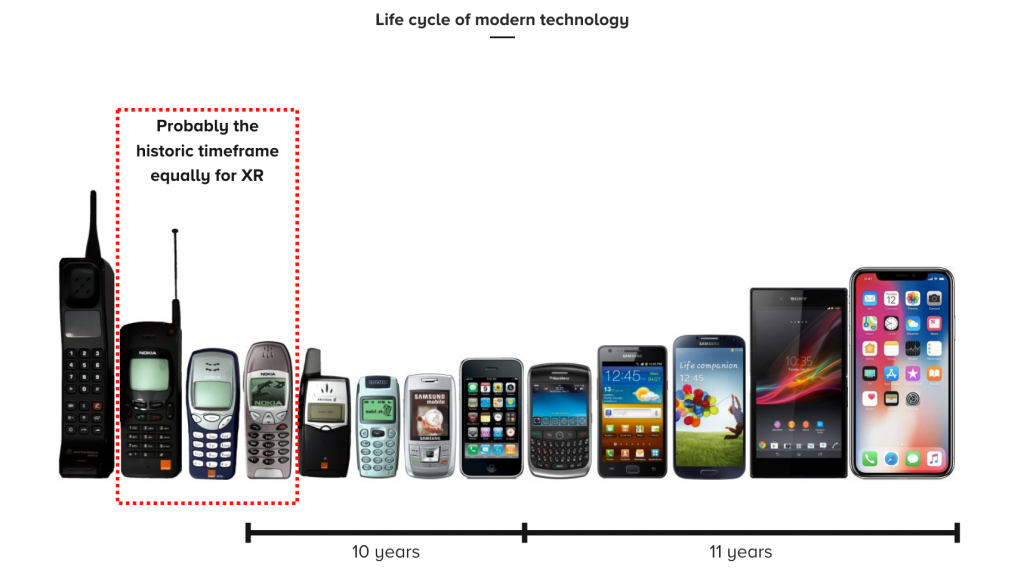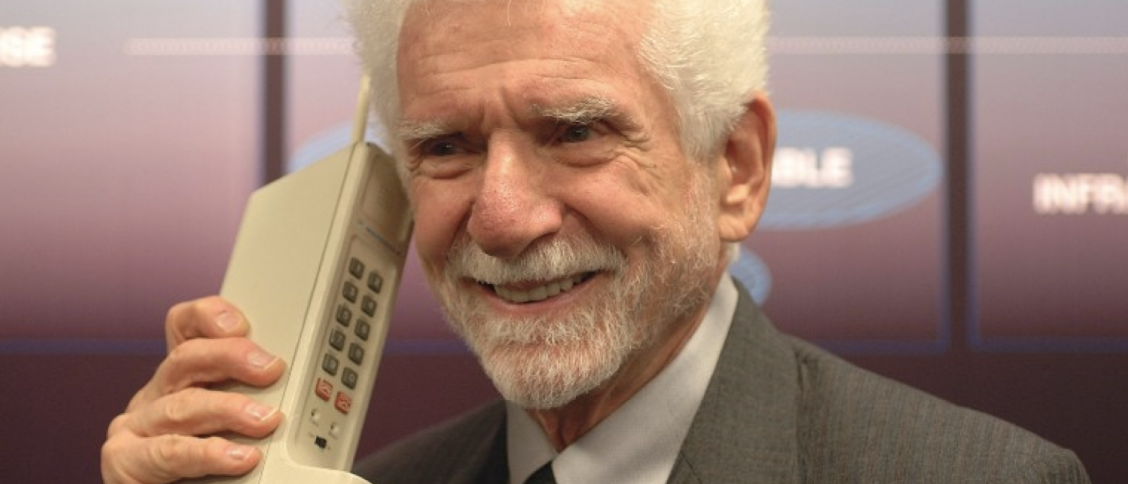When it comes to the future of XR (Extended Reality), it’s hard to fully quantify now its far-reaching potential. The closest parallel may be the release of the iPhone in 2007, which saw an explosion of new business models, frameworks and innovations. Although the iPhone wasn’t the first smartphone produced, it was the first one that was commercially successful. Please bear in mind it was relatively not long time ago, only 12 years from now.

Milestones of The Smartphone Evolution
1994 – When it all started
The first smartphone, created by IBM, was invented in 1992 and released for purchase in 1994. It was called the Simon Personal Communicator (SPC). The device featured several elements that became mandatory to every smartphone that followed. The first phone was combining functionality from both a cell phone and PDA and was priced at $899.
Then we experience the list of events which at the end shaped modern smartphone. Milestones in smartphone evolution I marked in this infographics. I also tried to predict the next level of devices which can supplement, or even replaced smartphone with time.

2007 – Steve Jobs introducing iPhone
It took us 12 years to make a ramp for the technology. While today we can scarcely imagine a world without the smartphone, before 2007 this was certainly not the case. Few, if any, could have predicted a hyper-connected digital world linked instantly and seamlessly by a global system of mobile networks. Very few people predict it will change our lives forever. According to a recent report by Deloitte, smartphones are now the most frequently used devices in the UK, and 95% of people who own smartphones have used them within the last day.
If you interested in full history of (smart)phone evolution check FlauntDigital at https://flauntdigital.com/blog/evolution-mobile-phones/
Addiction or obsession?
As mobile devices soar in popularity, a worrying trend has emerged: smartphone addiction. The average consumer spends at least three hours per day on their phone, unlocking it more than 150 times per day but… touches it on average around 2600 times per day (!).
We’re obsessed with our phones, a new study has found. The heaviest smartphone users click, tap or swipe on their phone 5,427 times a day, according to Dscout. (I encurage you to read the whole case study since there is a lot of useful facts) And that is actually a low-ball figure since the data wasn’t tracked when the phones where blocked (but users still could check notifications etc.).
Sounds impossible, but it is true. The average user touches it’s device 2,617 times a day…
dscout study
Our attention span is getting shorter and shorter every year, especially the problem exists with kids in school age. We are addicted to our devices and we must say it out loud.
In the smartphone analogy, we have seen what happens when society blindly adopts new technology without an honest discussion around responsible use between developers, psychologists, marketers and consumers. To avoid the pitfalls of mass addiction, brands need to lead with clarity and ensure an open dialogue about XR must take place.
It took us roughly 20 years to embrace technology. 12y to make a ramp for it and them after 2007 another 8 years of development. The last years don’t add too much to the table. The cameras are better and obviously smartphones are faster but there is no significant change to the device. Now we can’t imagine our lives without those devices. The 2007 and introduction of the iPhone was a shifting point for the technology.
Comparing this to VR/AR devices – we are still waiting for one device (our first iPhone) which will be comfortable and usable enough to change the market. Will Apple will be disruptor once again? Many believe – yes, time will tell. That is subject for another discussion, a very important if not crucial one.
The Questions:
- What steps should we take to avoid pitfalls for XR based on our experience with smartphones?
- What steps we should take to regulate XR before someone puts a glasses on the heads of masses and dictate their own terms?




